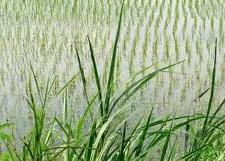The Macro Management of Agriculture Scheme is one of the centrally-sponsored schemes formulated with the objective to ensure that central assistance is spent on focused and specific interventions for the development of agriculture in states. It became operational in 2000-01 in all states and UTs. The scheme provides sufficient flexibility to the states to develop and pursue the programmes on the basis of their regional priorities. Thus, the states have been given a free hand to finalise their sector-wise allocation as per requirements of their developmental priorities.
Macro Management of Agriculture Scheme
30 Aug 2011
By
Admin
Related Posts with thumbnails for bloggerblogger widgets
Continue reading..
Rainfed Area Development Programme | Guidelines for rainfed area development programme
27 Aug 2011
By
Admin
In India rainfed agro-ecologies contribute 60% of the net sown area, 100% of the forest, 66% of the livestock and provide livelihood, income, employment and environmental security. Rainfed areas are complex, diverse, fragile, under-invested, risky, ethno-economically unique and distress prone. Planning Commission, in its working group report has proposed to develop all the waste land / rainfed areas (88.5 million ha.) in a period of 20 years (i.e. upto XIII Five Year Plan) at a cost of Rs.72750 crore with peoples’ participation.The activities undertaken in this programme include soil and moisture conservation measures like construction of check dams, water harvesting structures, desilting of village ponds, treatment of drainage lines/ gullies, land leveling, bunding of farms, treatment of problem soils, agro-forestry, agri- horticulture,silvi-pasture, organic farming, use of bio-fertilizers, value addition and marketing of produce through farmers groups, training & capacity building of staff & beneficiaries etc.
Related Posts with thumbnails for bloggerblogger widgets
Continue reading..
National Agricultural Insurance Scheme (NAIS)| Rashtriya Krishi Bima Yojana (RKBY)
22 Aug 2011
By
Admin
NAIS is fully funded by the Central Government. 50% of the premium amount is paid by Central goverment for Small (A cultivator with a land holding of 2 hectare or less (5 acres).) and marginal farmers (A cultivator with a land holding of 1 hectare or less (2.5 acres).). The scheme is implemented at district level. The NAIS scheme, which is currently under operation in 25 states and 2 Union Territories, is being implemented in the country since the 1999-2000 Rabi crop year. The implementation is done by Agriculture Insurance Company of India (AIC).
Related Posts with thumbnails for bloggerblogger widgets
Continue reading..
Rashtriya Krishi Vikas Yojana | National Agriculture Development Programme
19 Aug 2011
By
Admin
Economic reforms initiated since 1991 have put the Indian economy on a higher growth trajectory. Annual growth rate in the total Gross Domestic Product (GDP) has accelerated from below 6 per cent during the initial years of reforms to more than 8 per cent in recent years. The Planning Commission in its approach paper to the Eleventh Five-Year-plan has stated that 9 per cent growth rate in GDP would be feasible during the Eleventh Plan period. However, Agriculture, that accounted for more than 30 per cent of total GDP at the beginning of reforms, failed to maintain its pre-reform growth. On the contrary, it witnessed a sharp deceleration in growth after the mid-1990s. This happened despite the fact that agricultural productivity in most of the states was quite low as it were, and the potential for the growth of agriculture was high.
Related Posts with thumbnails for bloggerblogger widgets
Continue reading..




